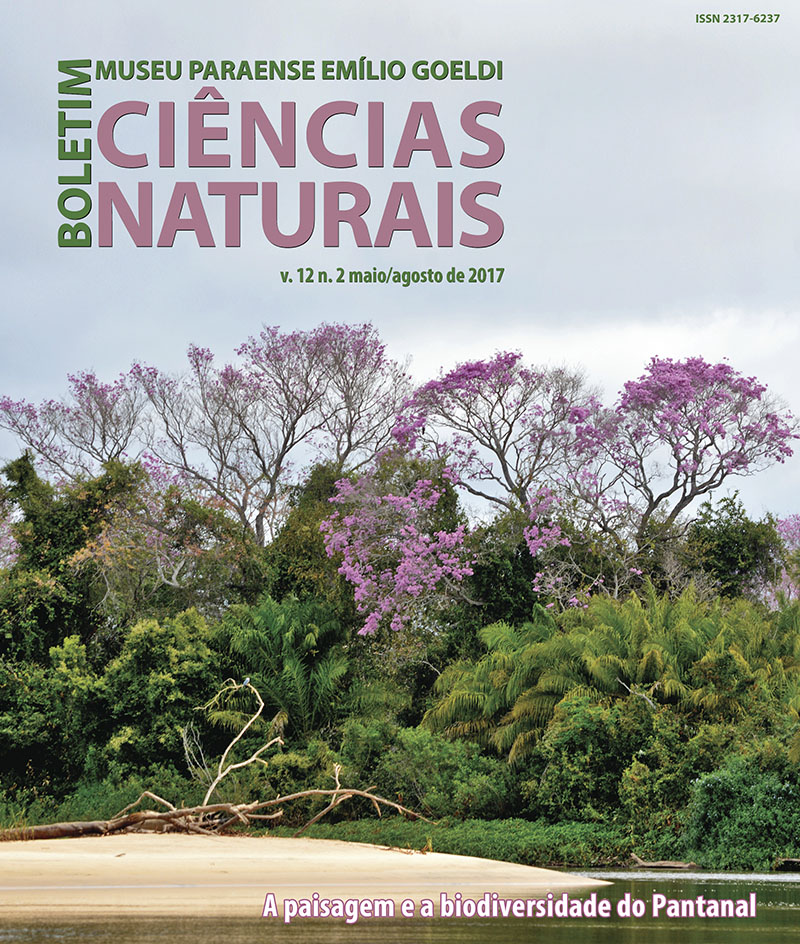Macro-habitats of the Taiamã Ecological Station, in the context of the Pantanal Wetland, Brazil
DOI:
https://doi.org/10.46357/bcnaturais.v12i2.387Keywords:
Flood poin, Diversity of habitats, Geotechnology, Conservation Unit, Biological conservationAbstract
The Pantanal wetland in Mato Grosso presents a geomorphological, hydrological, and biological complexity that results in its environmental heterogeneity. Knowledge of the macrohabitats found in protected areas of the Pantanal can give considerable support to decision making for their conservation. The objective of this research was to identify and characterize functional units, subclasses, and macrohabitats of the Taiamã Ecological Station (TES), and to contribute to the management strategies of this conservation unit. The identification of macrohabitats in the field was carried out between 2015 and 2016, with the use of Landsat scene 8. The data were processed through Supervised Classification. The functional units found were Permanently Aquatic Areas, Aquatic and Terrestrial Transition Zone, and Marsh areas. Six subclasses and six macrohabitats were identified. The most representative macrohabitats were Floating Field (Batumes), corresponding to 48%, followed by Flooded Field with 23%, and Monospecific Forest of Erythrina fusca Lour. (Abobral) with 16%. Registered macrohabitats in the TES reproduce the Pantanal's landscape mosaic, whose ecological functions need to be protected by specific legislation that addresses gaps in the preservation of Brazilian wetlands.
Downloads
Published
Issue
Section
License
Publication means fully assigning and transferring all copyrights of the manuscript to the journal. The Liability Statement and
Assignment of Copyrights will be enclosed with the notice of acceptance. All the authors must sign the document and return it to the journal.








